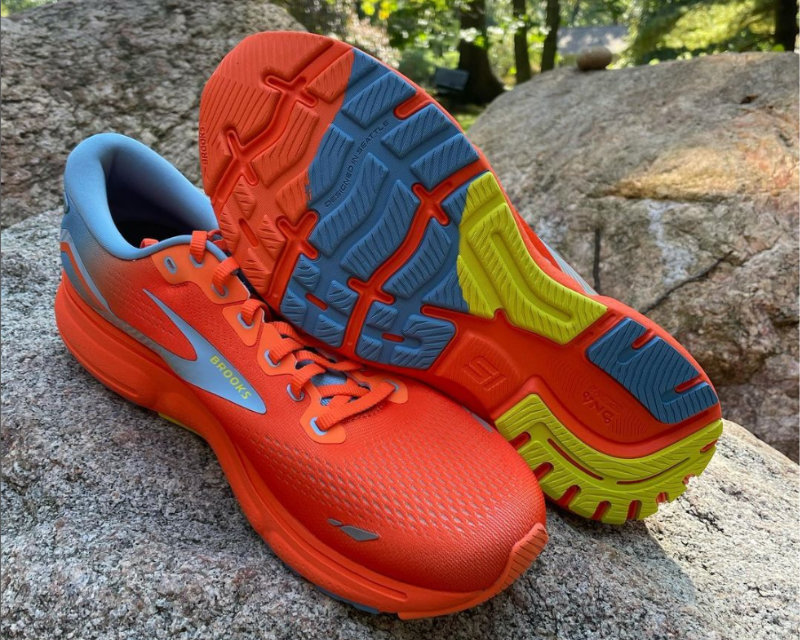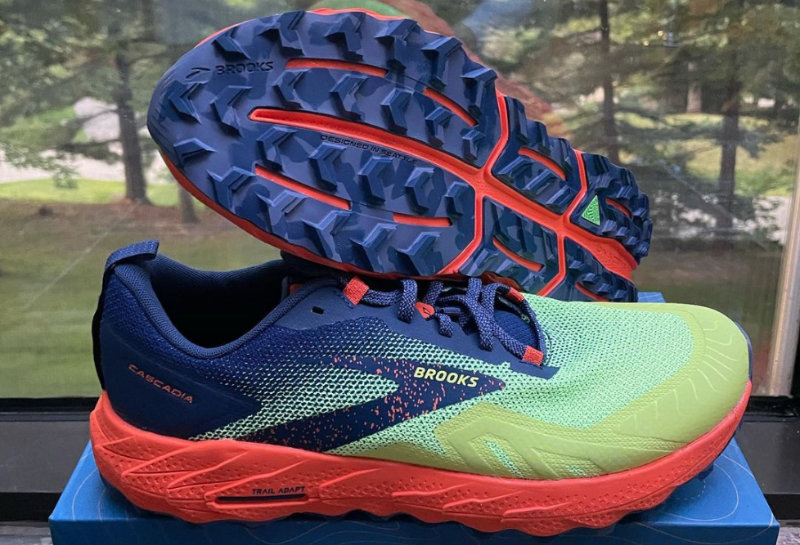Road vs. Trail-Running Shoes
Hello, fellow shoe enthusiasts! Are you like me and struggling with selecting from the vast array of running shoes available today? Me too. Deciding between “Road vs. Trail-Running Shoes” is like choosing between a sedan and an SUV: both can do fantastic jobs on different terrain. So let’s journey together into this mysterious world to uncover its differences—let’s lace up and discover!
Historical Evolution of Running Shoes
Oh, the tales our ancestor’s shoes could tell! Once upon a time, they probably helped our prehistoric forbears run from woolly mammoths in leather flaps—quite an impressive journey that led us from those simple foot protectors to today’s “Road vs. Trail-Running Shoes” battleground.
In ancient Greece, Pheidippides may have worn early sandals during his marathon feat, but nothing comes close to providing the cushion and spring that our modern running shoes do today. By the 1970s, running shoes had evolved from thin-soled slippers into dedicated gear, leading to road/trail division.
Did you know mountain goats inspired the rugged style of trail-running shoes? Well, not directly, but their excellent grip and stability provide ample evidence! I’m here for every soleful turn!
Anatomy of a Running Shoe
Ah, the anatomy class I never got to take–running shoe edition! Let’s dive into road versus trail running shoes to understand their different functions and see which kicks make sense for which scenarios.
Upper Part? That would be the shoe’s upper layer, which wraps our feet like a warm blanket on a cold morning. Road shoes tend to be lightweight and breathable—perfect for urban runs—while trail running shoes should act more like armored tanks, offering protection from pebbles and branches along our trails.
Midsoles are vital in providing cushiony support on hard surfaces; road shoes focus on responsive cushioning to allow repetitive strides on road surfaces; and trail versions offer additional shock absorption to account for unpredictable dips and bumps on trail terrain.
The outsoles of shoes, or their bottom parts, are all about grip. Road shoe outsoles provide even traction on terrain, while trail shoe lugs provide aggressive traction against slippery mud and rocks—almost like Spiderman on walls!
Let’s also discuss the toe box and heel counter: road shoes often provide more streamlined fits, while trail runners give your toes space to wiggle freely. Heel support? That’s all about preventing ankle rolls on uneven terrain! Next time you slip on those runners, give a silent nod of appreciation to their creators. Shoe anatomy is more like shoe artistry!
Road Running Shoes
Imagine this: It’s a sunny morning, and you’re exploring your city streets with your favorite playlist. Donning sneakers or those old high school track shoes might suffice, but consider road running shoes–superhero footwear explicitly designed to enhance asphalt and concrete running experiences!
-
Design and Structure
What sets these special shoes apart? First, they have fantastic cushioning! Imagine running on mini marshmallow clouds, providing essential bounce back. Plus, these shoes were specifically created to combat the brutal and unforgiving surfaces of urban jungles, so your feet remain comfortable mile after mile.
-
Traction and Grip
Traction? Check! Road shoes feature relatively flat and smooth outsoles to provide consistent traction on city surfaces without deep lugs or grip-like elements that impede walking or run the risk of slipperiness. Think of them like sports cars—sleek, fast, and built for speed!
-
Breathability and Flexibility
Breathability is another advantage to road running shoes designed with airy materials; your feet won’t sweat as much with these on. Sweaty feet don’t belong here!
Not to forget flexibility! Running shoes don’t just support your stride or rhythm; they become part of the team! So the next time you hit the pavement, remember: road running shoes are more than a choice; they’re an experience!
Trail-Running Shoes
So you want to enjoy nature? But before becoming one with it all, let’s talk shoes, particularly trail-running shoes—those cool, rugged cousins of road shoes! Let’s dive in. Here is what it boils down to:
-
Design & Structure
One thing’s for sure: trail shoes don’t make beauty contests look pretty! Instead, their design often flaunts their technical features in an eye-catching manner. Their materials tend to be robust enough for branches, stones, and squirrels alike, and the look suggests durability, as though these rugged boots have seen rough terrain before.
-
Traction & Grip
Trail shoes excel when it comes to grip. Imagine the grip of a toddler grabbing onto something forbidden—that’s your trail shoe on an unstable slope! Trail shoes feature outsoles with deep lugs and super grippy rubber outsoles to handle everything from wet leaves to mud slicks like no other footwear, like mini hiking boots for your soles of feet! Whether scrambling up muddy hills or tiptoeing across wet rocks… these shoes always have your back—or at least your feet!
-
Support & Stability
Remember those wobbly Bambi legs when you first tried trail running? Good trail shoes are designed to prevent that. They provide more structure, such as reinforced toe guards (who hasn’t stubbed a toe on an unexpected rock?). At the same time, the midsole was engineered for optimal stability by having a low-to-ground profile so you can feel the trail beneath your feet while cushioning from rough terrain—almost like having your support crew for your feet!
So when nature calls and you’re ready to explore trails, roots, rocks, and maybe even encounter a bewildered squirrel, it all boils down to footwear! Lace-up those trail shoes and let the adventures commence!
Factors to Consider When Choosing Between the Two
Let’s make this decision-making process a bit simpler for ourselves! Choosing between road and trail running shoes can be like choosing between peanut butter and jelly—both delicious yet having distinctive flavors. Here are a few things to keep in mind when finding your ideal running companion:
-
Terrain Type
Your Terrain Type Your playground makes a significant difference: city streets versus mountain trails? Road shoes are best suited to smooth surfaces, while trail shoes excel when encountering rocks and roots. So before making any purchases, envision where your feet will spend most of their time: urban jungle or wilderness.
-
Weather Conditions
Your shoes should be designed to handle rain, shine, snow, or sleet without complaint, though some shoes might prove otherwise! Trail shoes generally have more aggressive traction for slippery conditions than road running shoes; road shoes usually don’t offer as much. It is wise to consider local needs before deciding if rainy runs are commonplace where traction becomes an essential friend.
-
Personal Running Style
We all have our distinct running styles; some people may resemble graceful gazelles, while others could be seen running more like puppies! If your footfall and gait lean to lean, tilt, or pronate too often for comfort or injury prevention purposes, understand your footfall and gait to ensure proper footwear selection for comfort and injury prevention.
-
Injury History
Past injuries can serve as valuable clues about what your feet require; for instance, shin splints could suggest cushioning, while ankle twists need stability features in footwear. Allow shoes to do their magic and let their healing power work; it’s a wonder!
Selecting the ideal pair of shoes can make all the difference in life’s race. Just like choosing a dance partner, ensure they can keep pace and look good, too!
The Versatility Spectrum: Hybrid Shoes
Ever heard of a Swiss Army knife? Imagine shoes with similar capabilities—there are! Let’s dive into hybrid shoes together.
Why Hybrid? Life can be full of surprises! One day, you could run on asphalt pavement, while the next could take place off-road. Hybrid shoes were explicitly created for runners who often switch terrains—no need for two different pairs when one will do!
These versatile shoes usually offer moderate traction for light trails while not overcommitting on roads and providing adequate cushioning and support to ensure a pleasant running experience. No matter where your run takes you, your feet will get their due.
When Should You Consider Hybrid Shoes? If your running routine resembles an all-you-can-eat buffet, hybrid shoes could be your go-to. They’re especially great for unpredictable runs where a sidewalk turns into an unexpected trail; hybrids provide cushion and are adaptable enough to handle it all!
Remember, while hybrid shoes may offer you adaptability, they may not deliver all of the specialized benefits associated with road or trail shoes. Think of it like your multi-tool: it may get the job done, but with some compromises.
If you enjoy running with an unpredictable stride, hybrid shoes may be missing from your shoe collection! Give them a try now to see if hybrids could be what’s keeping your stride fresh!
Road vs. Trail-Running Shoes: Conclusion
Who knew there was such an epic saga behind selecting running shoes? Neither did I! And now, neither will you. Road vs. Trail Running Shoes is not simply an issue of debate but, moreover, an essential lifestyle choice that must be made, just as choosing between coffee or tea, or cats and dogs… the list could go on and on!
Road and trail-running shoes each have their own distinct history of triumph and tread, from racing through city streets to conquering rugged terrains—and there is a shoe designed specifically for either purpose! Your journey across a thousand miles (or just around the block!) begins here.
Are you someone who enjoys trying a bit of everything? Enter hybrid shoes—the jack of all trades in footwear—an iconic superhero without the cape!
So the next time someone brings up shoes at a dinner party (what? no?), you’ll be ready to join in the discussion. Here’s to lacing up and loving every step!





0 Comments